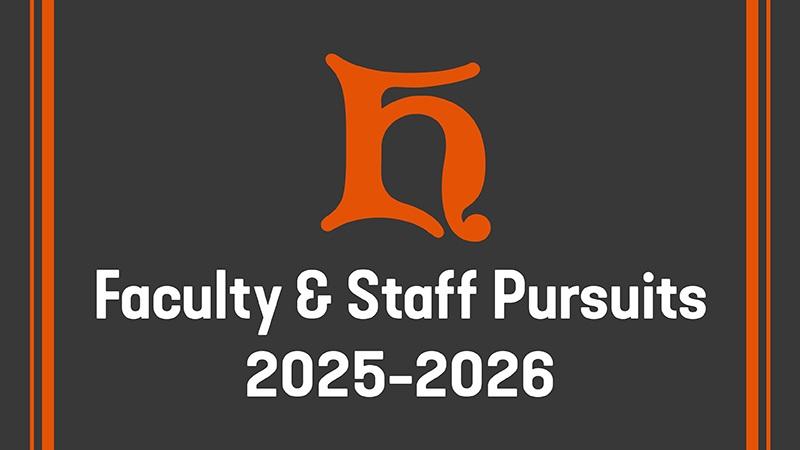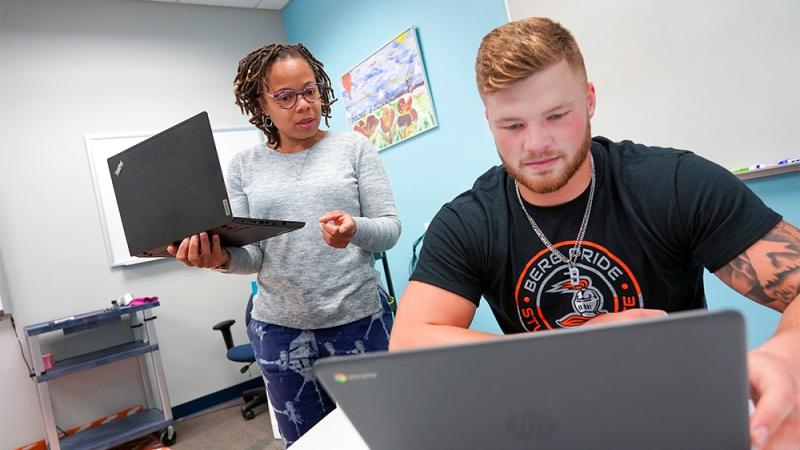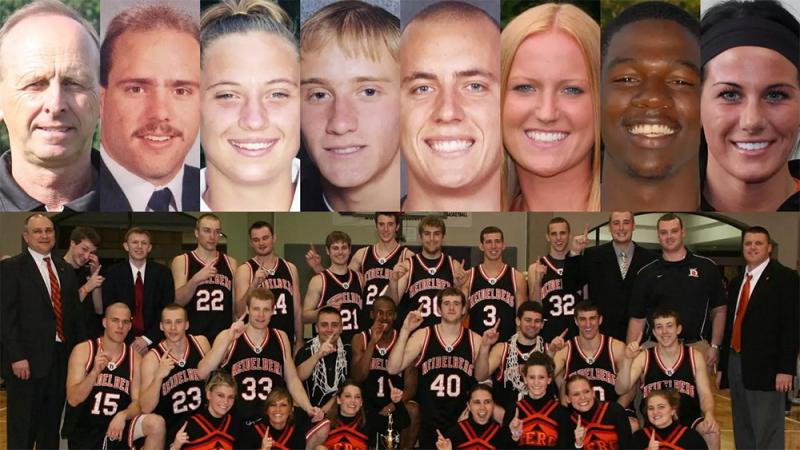Tribute to Dr. George Barlow: A giant in 'Berg Natural Sciences
Last semester, Heidelberg University lost a revered former professor, mentor and friend with the passing of Dr. George Barlow, who enjoyed a long and productive career teaching natural sciences, especially biology. Below is a tribute announcement from President Rob Huntington about the profound loss of this iconic professor.
January 9, 2024
Dear Colleagues,
I want to extend my personal apology to our community and my deep regret that we did not share this news sooner. Despite the pressure of a very busy October (including our Board meeting and Homecoming weekend), we should have acknowledged Dr. Barlow’s passing at that time. My responsibility. I feel especially sorry to the Barlow family for their huge loss and to the many Heidelberg faculty members and alumni in the Natural Sciences who revered him.
On October 8, 2023, Heidelberg University lost an outstanding retired professor and champion for ‘Berg science students with the passing of Professor Emeritus of Biology Dr. George Barlow at the age of 96. He and his beloved wife of 72 years, Marilyn, who survives, have lived in Friendship Village in Dublin, Ohio, for the past 25 years.
Born in Springfield, Massachusetts, the son of emigres from England, Dr. Barlow grew up in Marcy, New York. He joined the U.S. Navy, earning the rank of Hospital Corpsman Pharmacist Mate III. While serving on the USS Burleson, APA 7, he participated in the first two Pacific Ocean atomic bomb tests at Bikini Atoll, conducting hundreds of laboratory tests before and after each bomb explosion.
In 1950, Dr. Barlow graduated from Utica College of Syracuse University with majors in biology and chemistry, and three years later, he received his Ph.D. degree in biology from Princeton University, in 1953. He began his teaching and research career at the University of Tennessee College of Medicine that same year, teaching physiology and researching the effects of whole-body radiation isotopes. He was the author of many published scientific papers throughout his career.
In 1964, he ventured on “the road less traveled,” leaving graduate teaching to join the Biology Department at Heidelberg, where he remained until his retirement in 1987. For his stellar 23-year Heidelberg career, the Board of Trustees bestowed upon him professor emeritus status.
Dr. Barlow served as the chairperson of the Biology Department for many years. He taught introductory through advanced courses in physiology and anatomy. Teaching and advising all health science majors brought him a great deal of satisfaction and joy. Many of his former students, now Heidelberg alumni, have shared with Dr. Barlow the positive influence he had on their highly successful professional careers. Through the years, they frequently maintained correspondence with him via letters, visits, and a scholarship created in his honor.
Dr. Barlow demonstrated an unparalleled lifetime commitment to Heidelberg Biology. In his retirement, he authored “Teaching the Natural Sciences at Heidelberg: 150 Years of Biology and Geology,” along with co-author and alumnus, the late Dr. Ronald Stuckey, ’60. The book – a meticulous and thorough chronicle – was published in 2005 in conjunction with the opening of Gillmor Science Hall. The book’s forward, eloquently written by former Heidelberg President Dr. F. Dominic Dottavio (2003-2008), contains this passage that perfectly describes Dr. Barlow’s love for and commitment to the sciences at Heidelberg:
“Drs. Barlow and Stuckey have provided an invaluable service by researching and recounting the history of the natural sciences at Heidelberg College. Their treatise is notable because it describes the giants of the past upon whose shoulders stand today’s faculty. … You cannot help but be struck by how the commitments of former faculty contribute to the distinctive nature of the programs we offer today. … the broad shoulders of our current faculty are serving as the base of continuity with our past and the sparks of imagination for our future.”
I agree with Dr. Dottavio. The first Heidelberg book anyone gifted to me after my appointment 15 years ago was “Teaching the Natural Sciences at Heidelberg: 150 Years of Biology and Geology.” The late Dr. Dave Baker sent me a copy of this book authored by Dr. Barlow and Dr. Stuckey in early winter 2009 with a warm inscription applauding the great work of his colleagues and encouraging me to read about the teaching of sciences at Heidelberg. Even though I did not realize the stature of Dr. Barlow, or Dr. Stuckey, or Dr. Baker at that moment, it felt like important homework! I read most of it carefully and skimmed the rest of it less thoroughly in anticipation of meeting the authors later that spring and early summer. I remember meeting George and Marilyn and commenting on this book with a bit of uncertainty in my assessment. They both laughed graciously and kindly when I emphasized that I was not a science major in college.
Dr. Barlow was a frequent supporter of the Biology Department and scholarships for Heidelberg students through his longtime participation as a member of the then-Heidelberg Fellows Organization. How about this? He also provided a significant gift for the construction of Gillmor Hall, which is the home to an office in his name, and he and Marilyn would often contribute funds to support students with financial need.
One of Dr. Barlow’s greatest philanthropic gifts was his early and sustaining support of the Heidelberg Cadaver Lab, which Dr. Pam Faber founded in 1988. When Professor of Biology Barlow retired from his long and distinguished career in 1987, Professor of Biology Faber began her long and distinguished career by succeeding him. I believe that this is one of the great legacy faculty handoffs in our institution’s 173-year history. It is a legacy that has touched so many lives over generations, including that of Trustee and alumna Dr. Susan Wolf. Susan honored Dr. Barlow’s impact on her life by funding the initial renovation of the Cadaver Lab in conjunction with the opening of Gillmor Science Hall in 2005. Later, Susan created an endowed fund to cover the annual costs of acquiring the donor bodies and their transport to continue what her mentor professor had started. It was so perfectly fitting at the 10th Annual Cadaver Donor Appreciation Ceremony on November 16th that one of the students leading the ceremony and I each shared gratitude for Dr. Barlow’s support over 35 years and his close professional friendship with Dr. Faber.
In addition to Marilyn, Dr. Barlow is survived by two beloved daughters, Deborah and Suzanne, and six grandchildren whom he adored. Dr. Barlow was interred at the Worthington Presbyterian Church Columbarium. Anyone so inclined is welcome to contribute to the Dr. John C. & Eleanor L. Hoffmeier Biology Scholarship at Heidelberg or to the Friendship Village’s Residents’ Benevolent Fund in his memory.
I hope you will join me in extending our collective sympathy to Dr. Barlow’s family and his former colleagues and students who remember his influence with gratitude and great affection.
Respectfully,
Rob Huntington
President




